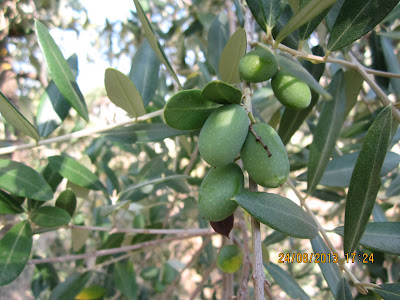Tuesday
July 16, 2013
BY
TAN CHENG LI
Lush
hills: Soaring limestone outcrops, such as Gua Panjang, tower over the
landscape of Kampung Merapoh, Pahang. Botanists say each hill is dominated by
different flora. – Photo by LAILA BASIR
Botanists
uncover a flora treasure trove in Merapoh hills.
THE
drive along Federal Route 8, or the Gua Musang Highway, in Pahang, is a rather
scenic one. Towering over the expanse of oil palm estates, which are broken up
in parts by rural kampung and lush forests, are majestic-looking limestone
outcrops.
Some
20 limestone karsts – some people say it is at least 30, as not all are shown
on maps – are scattered along the road stretching from Chegar Perah to Merapoh
in the district of Lipis before the land inches into Kelantan territory.
The
karsts are highly visible as one makes the drive but surprisingly, they are
completely unknown from a botanical viewpoint.
“We
looked for data and found no record of the plants there. None of the limestone
hills have been botanically explored before. For us, it’s a botanical blank on
the map of flora,” says Dr Ruth Kiew, a plant taxonomist at the Forest Research
Institute of Malaysia (FRIM).
And
so, when her team converged on the hills around Merapoh, there were plenty of
interesting discoveries – there were rare, endemic plants, and even an
undescribed one.
At
Gua Gunting, the hill which will be quarried, they recorded over 200 plant
species in just two days. This is hardly surprising as limestone hills are
known for their rich plant diversity.
Peninsular
Malaysia’s limestone hills cover only 0.3% of the land area but are home to 14%
of her plant species. Unfortunately, none of the limestone hills in Merapoh are
protected, and hence, are at risk from wanton development. The FRIM team made
two trips this year, where they surveyed five hills.
“From
what we have found so far, it’s a unique place as the flora on each hill is so
different. This is unique from my experience of working in Malaysia,” says Dr
Kiew, a leading authority on limestone flora. “I expected the flora to be an
extension of limestones from Gua Musang (in Kelantan), so I was surprised that
the hills are so different and we’re picking up unexpected things.”
One
such instance is the discovery of Pararuellia sumatrana (below) var. ridleyi
which is previously known only from Batu Caves, Selangor.
Pararuellia sumatrana var. ridleyi was thought to grow only in Batu Caves, Selangor, but was
recently found in Merapoh.
Another
important find is that of a balsam, Rhynchoglossum obliqua, previously known
only from Gunung Tupus (at Chegar Perah, south of Merapoh) and another
undisclosed site. FRIM scientists failed to locate the plant at Gunung Tupus,
now surrounded by oil palms, and believe it has become extinct there.
“This
is just one indication of what can happen. If limestone hills are surrounded by
oil palms and there is burning to clear the land, that will destroy the flora.
If the hills are not protected with a buffer, then it is easy for species to
become extinct.”
The
Merapoh hills also harbour species of fern, begonia and balsam that grow only
on limestone. The scientist also found the Pandanus irregularis which is
endemic to Peninsular Malaysia and grows only on the summits of limestone
hills.
Some
other finds:
>
Spelaeanthus chinii – Endemic to
Pahang, it was previously known only from Taman Negara and another hill in
Lipis.
>
Zippelia begoniifolius – Known from
only three collections, the last one in the 1930s.
>
Monophyllaea musangensis - Previously
known only from Gua Musang, Kelantan.
>
Tridynamia megalantha – Last
collected in Perak in the 1880s.
>
Calciphilopteris alleniae - A rare
endemic fern known only from five limestone hills.
>
Cleisostoma complicatum – This is the
third locale for this orchid which is found in Pahang for the first time.
These
are just the preliminary findings; the botanists have bags of specimens
awaiting analysis and they intend to make more trips to Merapoh.
“We’re
just scratching the surface as we’ve only surveyed five hills. We need to
survey all 20 hills to document the plants and see which is critically
important for conservation because of rare and endangered species.
“Limestone
hills have a lot of micro-habitats. For instance, at the foothills you get
plants suited to damp conditions. On the rock face, there are other types of
flora and at the hilltop, you get plants which are exposed to the sun. So, you
must survey all habitats to get a complete list of the flora,” says Dr Kiew.
She
adds that surveys of fossils, micro-snails and cave fauna are also needed to
determine the importance of the hills for wildlife.
Preservation
of the caves is important, she adds, as they can be part of the Sungai Yu
wildlife corridor, a stretch of forest that is important for connecting Taman
Negara and the Main Range, the country’s two largest forest complexes.





.jpg)
.jpg)
.jpg)
.jpg)








